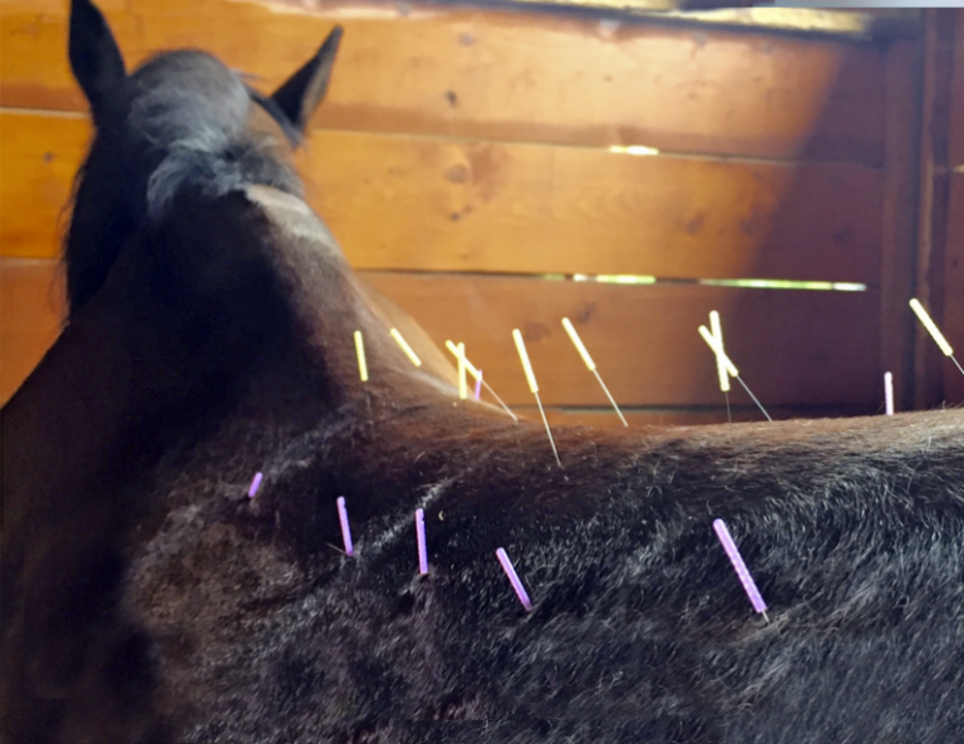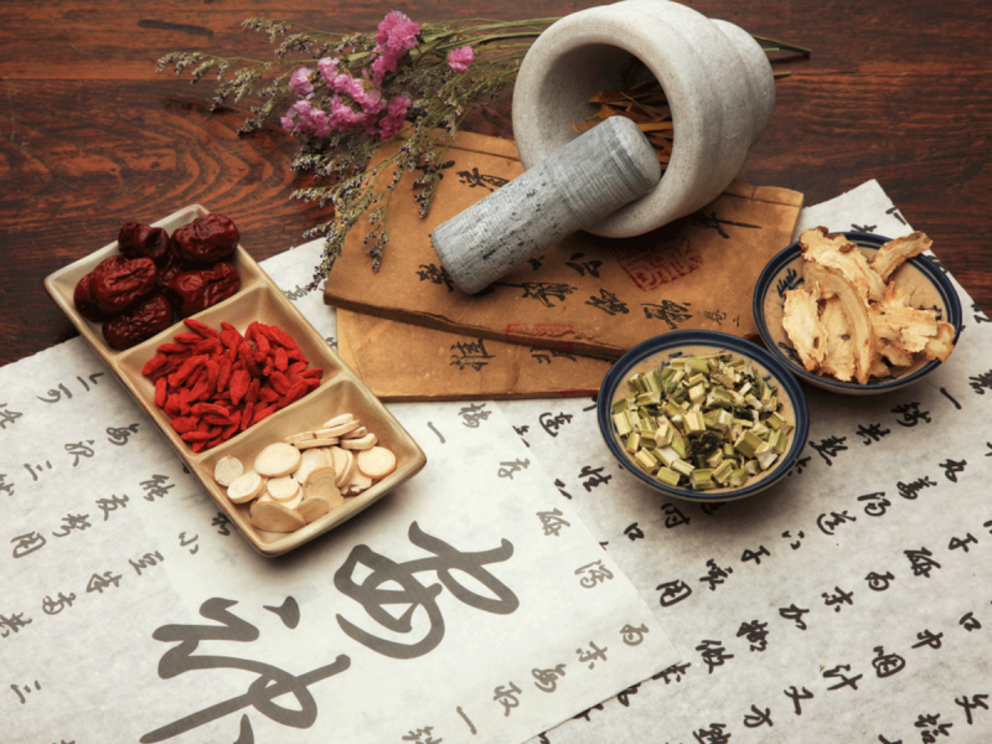Traditional Chinese Veterinary Medicine: What is it and how it works?
We know how difficult it is to find good holistic practitioners, let alone great practitioners that are also veterinarians. Trying to find that great balance between conventional and holistic medicine for your pet can take some work.
That is why we are highlighting Dr. Rowena Barrett from Acupaws, based in Perth, Western Australia. Rowena has been a practicing vet for over 20 years, and specialises in Traditional Chinese Veterinary Medicine. From Animal BioMechanics to Chinese Herbs, Rowena has successfully treated many animals, including my own four fur babies and I refer many of my own clients to her expertise. For those whom haven’t used Traditional Chinese Veterinary Medicine (TCVM) before, we explore what it is and how it can work for your animal.

Traditional Chinese Medicine
Traditional Chinese Medicine (TCM) theory and treatment differs considerably from conventional Western Medicine practices. While TCM concepts can appear strange to the western mind, it nevertheless provides a consistent and coherent framework within which to view the animal body in both healthy and disease states.
Rather than focussing on the cause of disease, TCM looks at the whole individual and their interaction with the environment – it is about maintaining balance, and through this, maintaining health.
History
The use of Acupuncture to treat and prevent disease has been used for thousands of years. In China, stone needles known as ‘bian-stones’ have been found dating back to around 3,000 years BC. The first comprehensive text on Acupuncture and Chinese Medical theories dates from around 200BC, more than 2,000 years before the same discoveries were made in Western Medicine in 1628.
Veterinary Acupuncture has probably existed almost as long as human Acupuncture, with the earliest recognised Veterinary Acupuncture text written around 650BC. Many other texts have been written over the centuries and the use of Veterinary Acupuncture to treat companion animals such as dogs and cats is now widespread.

Traditional Chinese Medicine
The Traditional Chinese Medicine (TCM) system of healthcare has been evolving for over 3,000 years. Based on Taoist philosophy, it sees the universe and everything in it as an integrated whole – everything is interdependent and mutually interactive.
TCM promotes a holistic approach to the health of an individual – it is not just about reacting to disease but rather with maintaining health. Disease in TCM stems from imbalance, whether a disharmony within the individual or between the individual and the environment. By analysing all aspects of the individual and their environment a TCM practitioner can identify the patterns of disharmony that have lead to disease in an individual. Treating the underlying pattern of disharmony with Chinese Herbal Medicine or Acupuncture can restore balance to the system and may result in an improvement or cure in the disease condition.
Traditional Chinese Medicine and Disease
When presented with an individual with disease TCM practitioners will look for underlying patterns of disharmony. Although the same name may be given to two animals experiencing the same pattern of disharmony, the cause of their disease may be entirely different. Only by identifying the cause will the root of the disease be discovered and long-term results assured.
TCM stresses the key to health is balance – balance between the individual organs, between the organs and the tissues of the body, between Yin and Yang, balance in the flow of Qi in the body, and balance between the animal and their environment. Disease occurs when the balance is upset, leading to a disturbance in the balance between Anti-Pathogenic Qi (the body’s defensive Qi) and Pathogenic Qi (external disease causing factors).
The causes of disease according to TCM can be broken down into the following categories:
- Constitution – an animal’s constitution is determined at conception and can be changed only with great difficulty
- Exogenous Pathogenic factors – Heat, Cold, Wind, Damp, Fire, Dryness and Summer Heat
- The Seven Emotions – Joy, Anger, Sadness, Grief, Worry, Fear and Fright. Like people, animals can experience severe emotions and this can be a powerful cause of disease
- Internally generated Pathogenic factors – Internal Heat, Cold Wind and Damp and Phlegm; these originate mainly due to the dysfunction of the Zang Fu (organs) or imbalance between Yin and Yang
- Lifestyle Factors – including diet, stress and exercise
- Miscellaneous Events – such as trauma, exposure to parasites or poisons, and incorrect medical treatment.
Yin and Yang
Yin and Yang represent a way of thinking about the world, a perspective that is fluid, based on the dynamic processes of life and the universe rather than physical structure which dominates western thought and western medicine
In the simplest of terms, Yang relates to properties of light, heat and activity, and Yin to darkness, coolness and serenity. They represent two diametrically opposed phenomena such as fire and water or night and day – opposites, but at the same time complementary and mutually dependent. One cannot exist without the other, just as light cannot exist without dark, hot without cold, or male without female.
The human or animal body can be divided into Yin and Yang aspects both in terms of structure and function. Health is preserved by maintaining the balance or equilibrium between these opposing but integrated factors. If the equilibrium is disturbed and an imbalance between Yin and Yang arises that the body cannot compensate for, illness or disease may arise.
Qi – The Energy or Life Force
In simple terms, Qi represents energy and as a dominating TCM concept it is integral to thoughts, emotions, tissue and blood..
The Chinese say ‘When Qi gathers, so the physical body is formed; when Qi disperses so the body dies’. If Qi is the basis of life it follows then that manipulation of Qi within the body has an effect in terms of health or illness. The use of Acupuncture and Chinese Herbal Medicine can have an effect on Qi, helping to restore balance to the body, relieve pain and reverse disease.
Chinese Herbal Medicine
Chinese Herbal Medicine was developed over 3,000 years ago as an effective means of strengthening and regulating the flow of energy (Qi) throughout the body, treating any disharmony of the internal organs and eliminating Pathogenic Factors from the body.
It is vastly different from western herbalism in that it uses a combination of carefully selected herbs working together as a formula to treat disease. These formulas may contain between two and twenty herbal substances obtained from plant, animal or mineral sources. (Note: No animal products are used in formulations produced by Acupaws).
Most herbs originate from plants, with different parts of the same plant prompting different reactions in the body. Herbs may also be processed in different manners (such as cooked or raw) to change their actions on the body. Certain herbs will also target specific organs and channels in the body.
Once a TCM diagnosis is made herbs may be selected to target the affected area. Herbal selection is quite complex and a full work-up of the patient is required to formulate an individualized prescription.

If you feel your animal could be benefit from TCVM you can contact Rowena via her website. If you are from interstate or overseas, it is up to Rowena’s discretion if she will take on virtual clients.
Acupaws – Rowena Barrett
Information & Article credit to Rowena Barrett at Acupaws 2020
